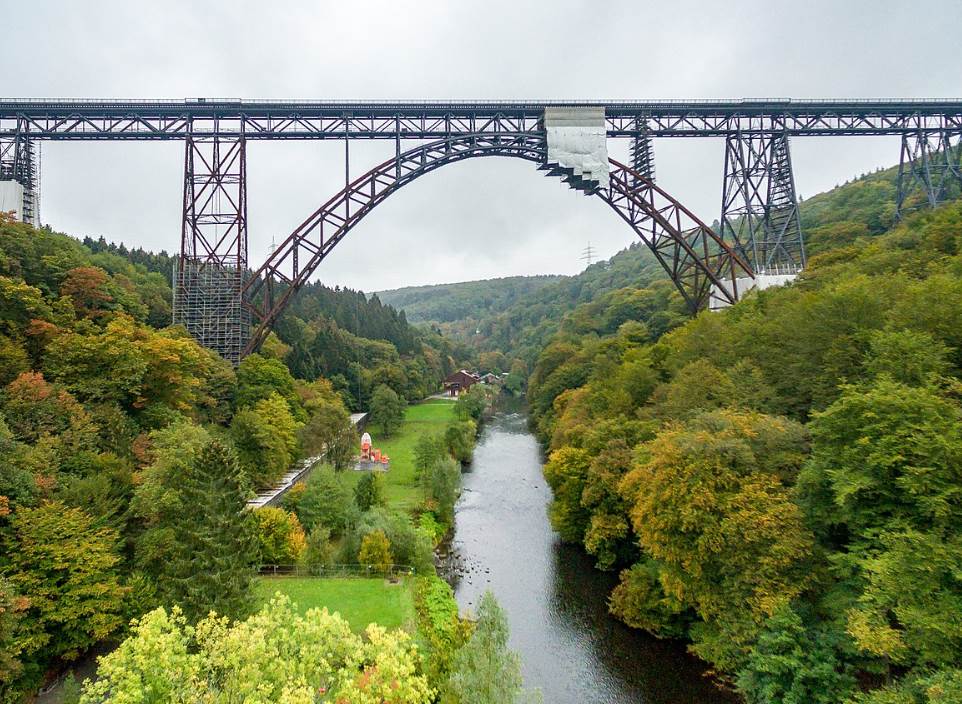The landscape of Germany varies widely. The northern part of the country is as flat as can be while the southern part borders the mighty Alps Mountain range.
This means that the variety of famous bridges in the country varies just as much. You can find bridges crossing canyons in hilly regions and bridges crossing lakes and rivers.
In this article, you’ll discover some of the most famous bridges in Germany, some of which have become interesting attractions by themselves.
1. Oberbaum Bridge
The Oberbaum Bridge crosses the Spree River in the central part of the German capital. It’s one of Berlin’s most distinctive landmarks and has an interesting piece of history attached to it as well.
This double-deck bridge connects the Berlin districts of Friedrichshain and Kreuzberg. These two boroughs were once separated from each other by the Berlin Wall.
The upper part of this iconic bridge carries a railway line of Berlin’s U-Bahn while the lower part carries a roadway. It first opened to traffic in the late 19th century.
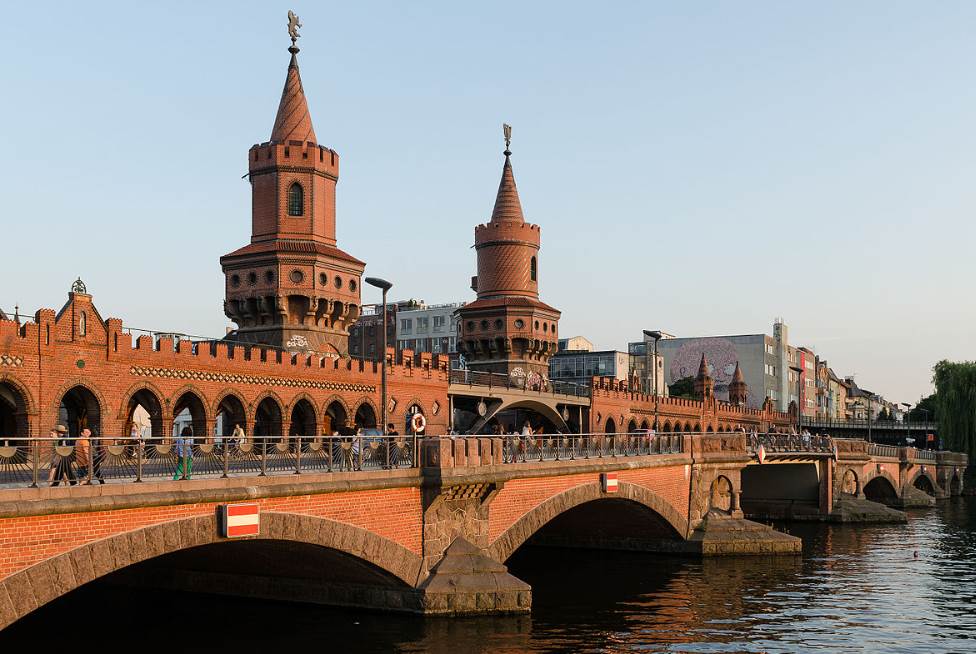
2. Geierlay
The Geierlay is a magnificent suspension bridge located in the Hunsrück mountain range in western Germany. It connects the villages of Mörsdorf and Sosberg in this relatively low mountain range.
The bridge only opened in 2015 and it has been a popular tourist attraction in the region ever since as people want to experience crossing the valley of a small stream called the Mörsdorfer Bach.
If you have fear of heights, you better skip this attraction because it reaches a height of up to 100 meters (330 feet) above the valley below. It’s also longer than it appears to be with a length of 360 meters (1,180 feet).
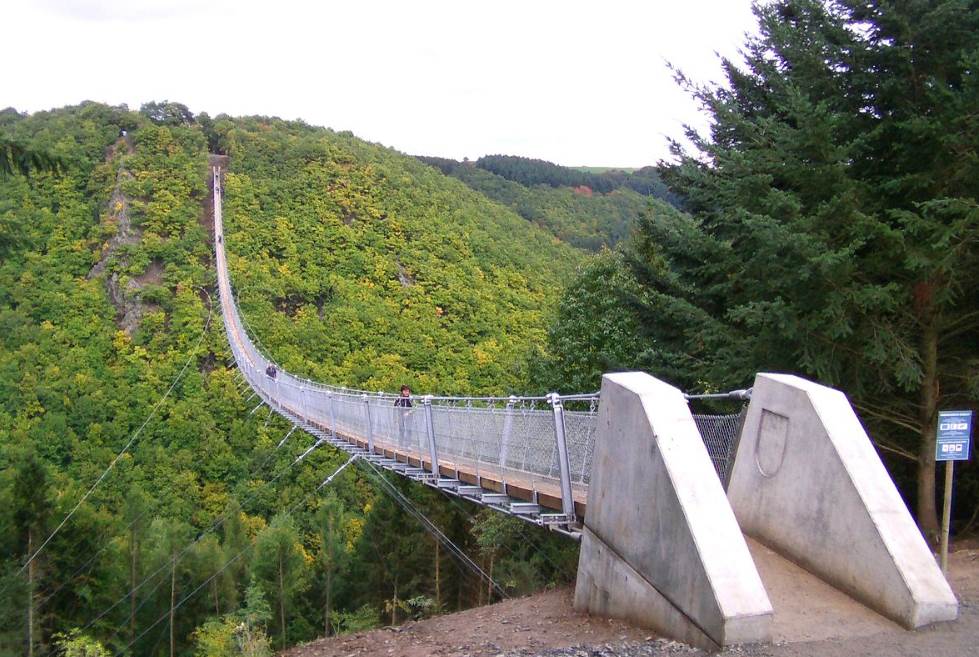
3. Queen Mary’s Bridge
The Queen Mary’s Bridge is locally referred to as the “Marienbrucke” and is a famous bridge in Germany that has arguably the most amazing background in the country.
The structure you see is Neuschwanstein Castle, the incredible castle in Europe that has a fairytale-like atmosphere surrounding it.
The bridge in the southwest of Bavaria crosses a canyon behind the castle. As you can see, it provides some of the most amazing views imaginable.
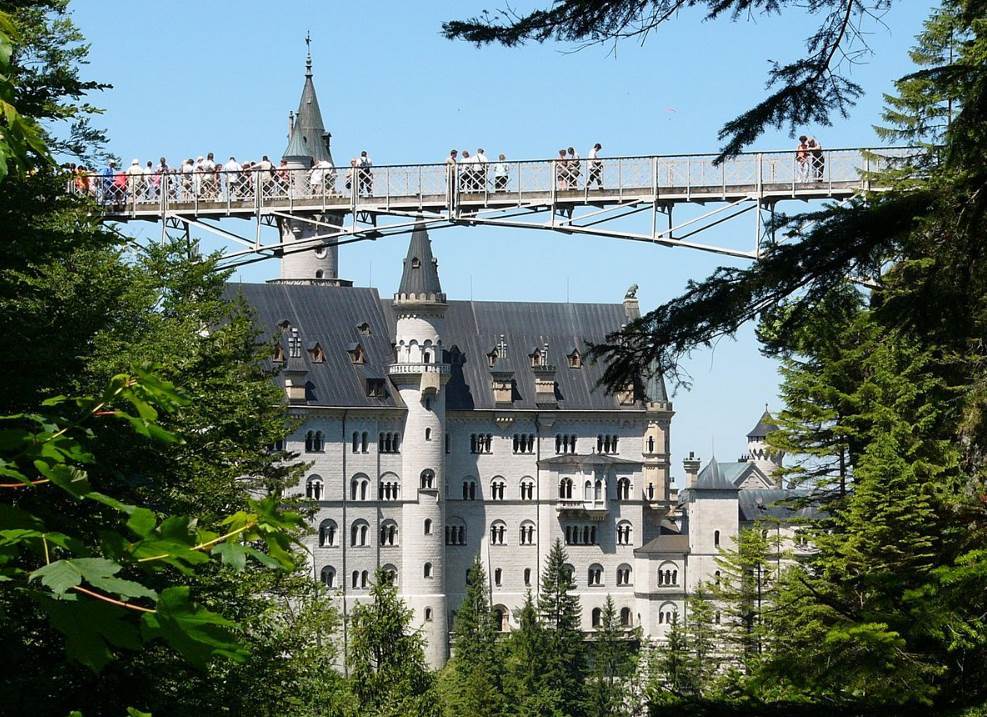
4. Glienicke Bridge
The Glienicke Bridge is a historic bridge that crosses a lake of the same name near the German city of Potsdam. It connects the city with the Wannsee district in southwestern Berlin.
The first bridge in this location was a wooden structure that was constructed in 1660. The bridge we can admire today is the 4th on this location and was completed in the year 1907.
It’s another bridge that played a role during the Cold War because it was used to exchange captured spies between East and West Berlin. It was referred to as the “Bridge of Spies” during this horrible period in German history.
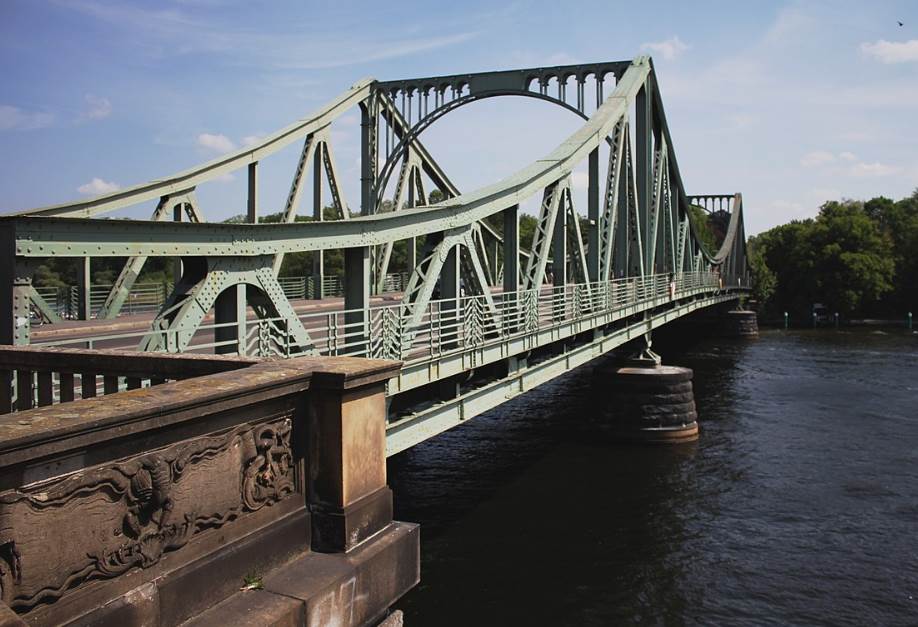
5. Fehmarn Sound Bridge
The Fehmarn Sound Bridge is a magnificent structure in the northern part of Germany. It connects the German mainland with the German island of Fehmarn in the Baltic Sea.
It’s one of the longest bridges in Germany as it has a total length of 963 meters (3,159 feet). The structure is dominated by a huge arch that reaches a height of 67 meters (219 feet 10 inches) above the water below.
This section of the Baltic Sea is called the Fehmarn Sound, a strait with a maximum width of 1,300 meters (4,365 feet). The bridge was constructed between 1958 and 1963 and still looks amazing today.

6. Göltzsch Viaduct
The Göltzsch Viaduct has a similar appearance as some of the ancient Roman aqueducts of which remains can be found all across Europe. Especially the Pont du Gard in southern France comes to mind.
It’s a historic bridge but not nearly as old as that magnificent bridge in France. It was constructed between 1846 and 1851 and was the tallest railway bridge in the world at the time with a height of 78 meters (256 feet).
It still holds a fascinating record today because it’s still the largest brick-built bridge in the world. Over 26 million bricks were used to build this structure that features 4 levels and 98 vaults.
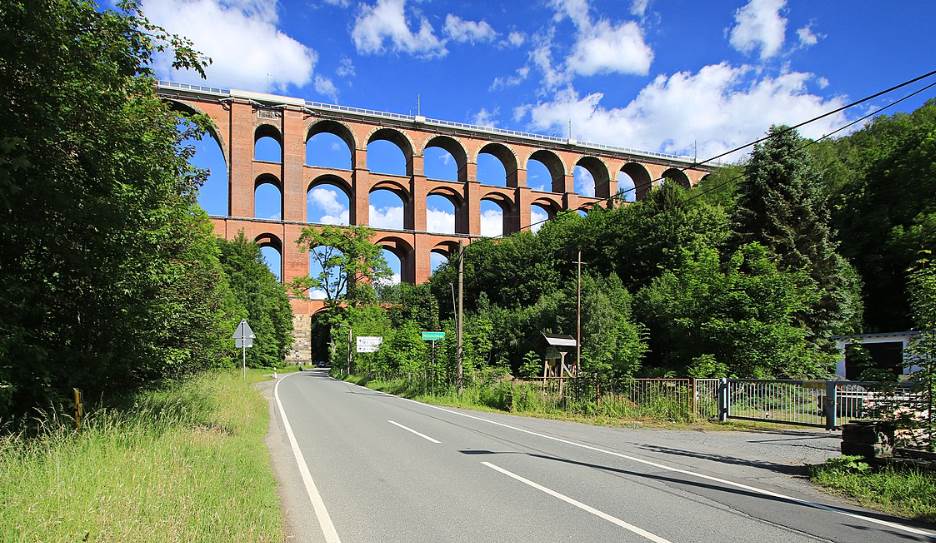
7. Strelasund Crossing
The Strelasund Crossing is another bridge in Germany that crosses a sound in the northern part of the country. The bridge connects the city of Stralsund with the German island of Rügen.
This modern-looking cable-stayed bridge was constructed fairly recently in the early 21st century as it was completed between 2004 and 2007. It’s locally known as the “Rügenbrücke” or “Rügen Bridge,” a reference to the island it connects to the mainland.
This immense structure can hold a candle to the famous bridges in NYC because it has a length of 2,831 meters (9,288 feet). This makes it one of the longest bridges in the central part of Europe.

8. Rendsburg High Bridge
The Rendsburg High Bridge is a cantilever railway bridge that crosses the Kiel Canal in Rendsburg. This town in northern Germany is located just west of Kiel, a major port city on the German Baltic Coast.
This steel bridge has a length of 2,486 meters (8,156 feet) and a maximum height of 68 meters (223 feet). The railway track is located 42 meters (460 feet) above the canal’s water below.
The canal was constructed between 1887 and 1895 and was originally referred to as the “Kaiser-Wilhelm-Kanal.” the bridge was completed nearly 2 decades later between 1911 and 1913.
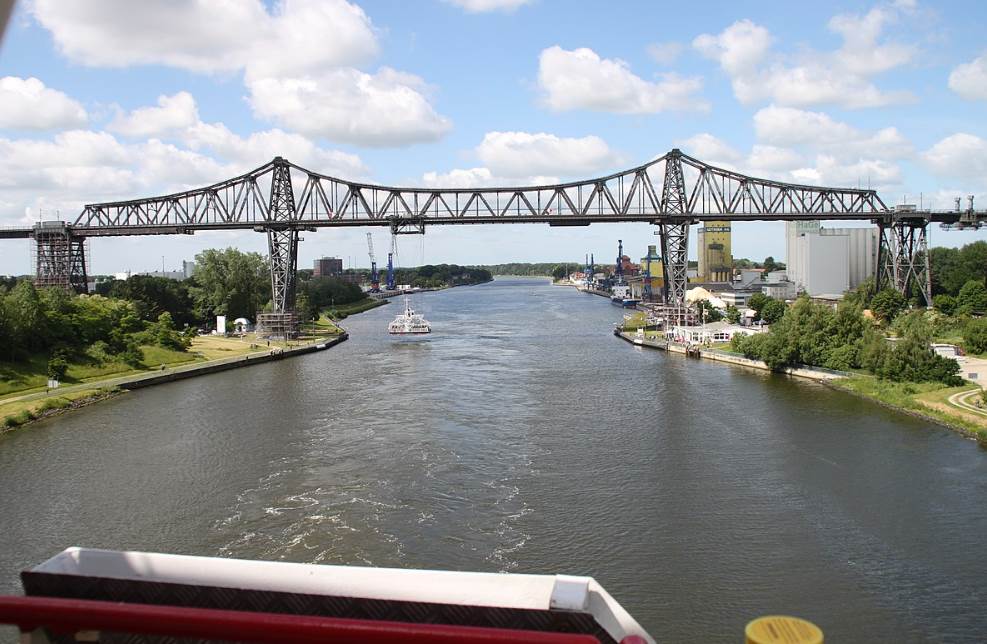
9. Karl Theodor Bridge (Old Bridge)
The Karl Theodor Bridge is the official name of a bridge that is commonly referred to as the “Old Bridge.” It’s located in Heidelberg, a city on the Neckar River in the southwestern part of Germany.
The bridge crosses the ever in the heart of the city and connects the Old City district in the south with the Neuenheim district in the north. It provides amazing views of the partially ruined Heidelberg Castle.
It’s the ninth bridge that was constructed in this location, a notion that makes it all the more remarkable that it was opened in the year 1788.
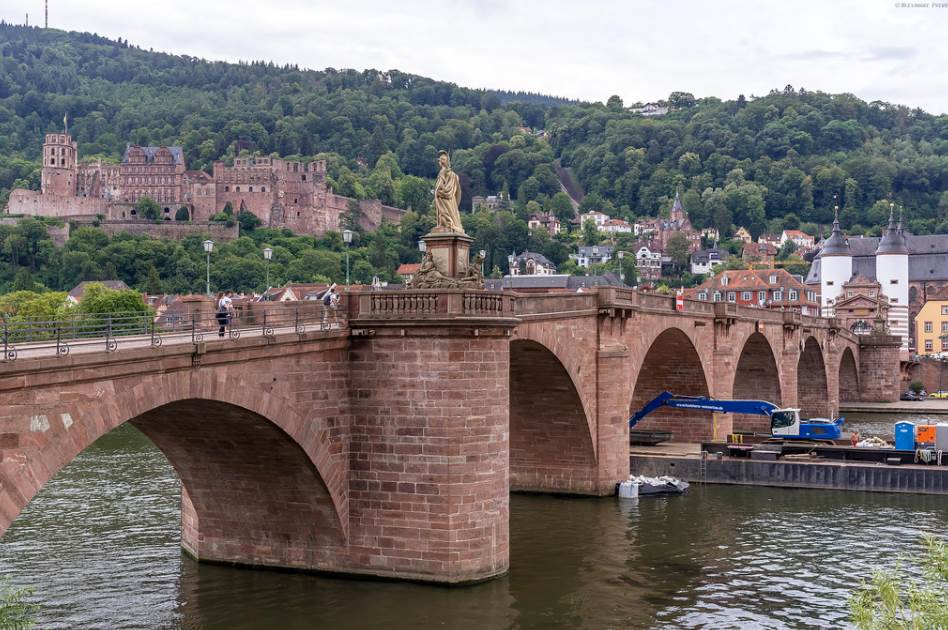
10. Müngsten Bridge
The Müngsten Bridge is a truss and arch railway bridge that crosses the Wupper River. It connects the cities of Remscheid and Solingen in North-Rhine Westphalia in the western part of the country.
It holds a remarkable record because it’s the highest railway bridge in Germany. It reaches a maximum height of 107 meters (351 feet) above the Wupper valley below.
The bride was completed in 1897 and corrosion seriously damaged the structure by the early 21st century. You can see the ongoing renovation works conducted recently in the image below.
